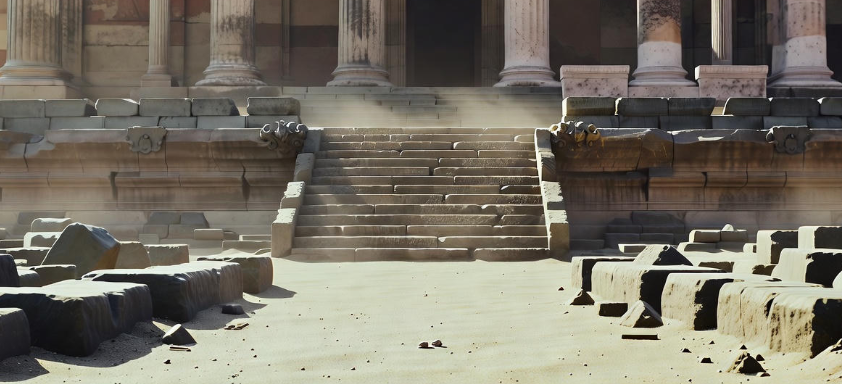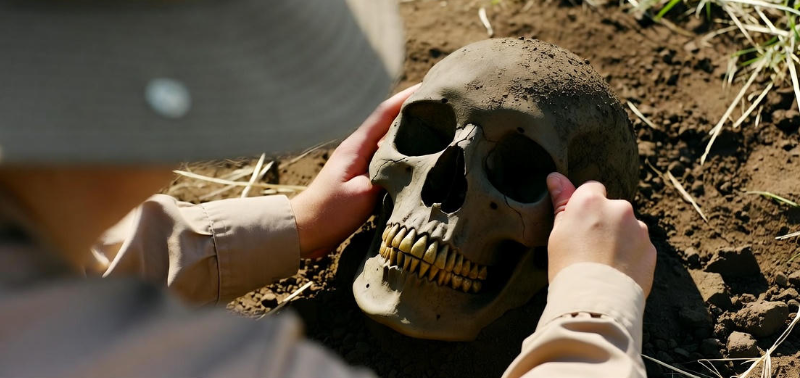Have you ever wondered how we know what life was like thousands of years ago—before books, photos, or even writing existed? 🤔 The answer lies beneath our feet, in the silent layers of earth that hide stories of ancient people. This is where archaeology steps in. Archaeology is like a time machine—one that doesn’t just tell us about kings and wars but about everyday people, their meals, tools, homes, and even their dreams.
Let’s explore what archaeology really reveals about ancient human life—how our ancestors lived, worked, loved, and survived long before modern civilization appeared.
The Real Meaning of Archaeology
Archaeology isn’t just about digging up old bones or broken pots. It’s a science of discovery, a patient search for clues about people who lived long ago. Archaeologists carefully study artifacts (like tools, jewelry, and pottery), ruins of buildings, burial sites, and even ancient garbage pits (yes, trash can be valuable too 😅).
Each discovery helps piece together the puzzle of human history. Unlike history books, which depend on written records, archaeology gives a voice to those who never had one—to farmers, hunters, traders, and families who lived quietly but built the world we now stand on.
How Archaeologists Reconstruct Ancient Lives
So, how do archaeologists actually know what happened thousands of years ago? Well, it’s a lot like detective work. Here’s a simple breakdown:
| Method | What It Reveals |
|---|---|
| Excavation | Unearthing physical remains like bones, pottery, or tools. |
| Carbon Dating | Finding the actual age of objects using scientific techniques. |
| Soil Analysis | Discovering how old layers are and what activities took place there. |
| DNA Analysis | Learning about the genetics, diet, and even diseases of ancient humans. |
| Artifact Study | Understanding culture, technology, and lifestyle from tools and art. |
Every object tells a story. A piece of pottery can show trade between regions, while a spearhead reveals hunting techniques or even conflicts between tribes.
Daily Life of Ancient Humans 🏕️
When we think of ancient people, we often picture wild, rough lifestyles. But archaeology shows something more fascinating—ancient humans were creative, emotional, and surprisingly organized.
Shelter and Homes:
Excavations show early humans lived in caves or built small huts from wood, bones, and leaves. As time passed, they learned to build mud-brick houses, complete with storage areas and fire pits. Archaeological sites like Çatalhöyük in Turkey (from around 7000 BCE) even show multi-room homes decorated with wall paintings. Imagine that—ancient interior design! 🎨
Food and Cooking:
Stone tools with plant residues and animal bones tell us how people hunted and cooked. In ancient times, diets varied widely—some communities lived on fish and berries, while others raised crops and livestock. Grinding stones and fire pits found at dig sites suggest that cooking was a social and family activity, not just survival.
Clothing and Jewelry:
From bone needles to beads and shells, archaeology reveals humans cared about appearance and self-expression. Ancient jewelry was not just decoration—it showed social status, beliefs, and sometimes protection from evil spirits.
Art and Imagination in Ancient Times 🎭
One of the most beautiful things archaeology has shown us is how artistic early humans were. In the caves of Lascaux, France, archaeologists found incredible wall paintings of animals, some over 17,000 years old.
Why did they paint these images? No one knows for sure. Some say it was spiritual, others believe it was a way to teach or record hunting stories. But one thing’s clear—humans always had imagination, emotion, and creativity.
Even simple carvings or musical instruments (like bone flutes found in Europe) show how humans loved rhythm and expression long before cities existed.
Social Life and Early Communities
Archaeological findings show that humans are deeply social beings. From small groups of hunter-gatherers to large farming villages, cooperation was key to survival. Burial sites tell us people cared for each other deeply—many graves include gifts, tools, and food for the afterlife.
At sites like Skara Brae in Scotland, homes were built close together, showing strong communities. There were shared spaces for food preparation, storytelling, and rituals. This means even in prehistoric times, humans valued friendship, teamwork, and belonging.
The Rise of Agriculture and Settled Life 🌾
Perhaps the biggest shift in human history was when people stopped wandering and started farming. Archaeological sites from the Neolithic Age (around 10,000 years ago) show how humans began domesticating plants and animals.
Seeds found in old storage pits prove they grew wheat and barley. Animal bones show domesticated goats, cattle, and dogs. Farming allowed humans to stay in one place, build villages, and create societies that later became cities.
Here’s a quick table of what changed during this time:
| Before Agriculture | After Agriculture |
|---|---|
| Nomadic lifestyle | Permanent settlements |
| Hunting and gathering | Farming and animal herding |
| Small groups | Large communities |
| No written records | Early counting and symbols |
| Survival-based living | Trade, art, and religion grew |
Archaeology literally allows us to see this transformation—how humans turned from wanderers into builders of civilization.
Spiritual Beliefs and Rituals 🪔
Religion and spirituality go way back—far before temples or organized faiths. Burial practices, cave paintings, and ritual objects suggest that even ancient humans believed in something beyond the visible world.
At sites like Göbekli Tepe in Turkey (built around 9600 BCE), archaeologists found giant stone pillars arranged in circles. No one lived there—it was likely a sacred place for rituals. That means organized religion began much earlier than we ever thought.
Other discoveries—like amulets or symbols carved into stones—show ancient humans sought protection, luck, and meaning, just as people do today.
Trade and Early Economy 💰
Archaeology also reveals that ancient people were clever traders. Obsidian (volcanic glass) tools found far from volcanoes prove that people traded goods across long distances. Beads, shells, and precious stones found in graves show networks of exchange between regions.
Trade wasn’t just about survival—it created communication, shared ideas, and even cultural mixing. It’s the ancient version of globalization, in a way.
Conflict and Cooperation in Ancient Societies ⚔️
Not all discoveries show peace and harmony. Archaeologists have also found fortresses, weapons, and mass graves—evidence that conflict and war were part of ancient life. But they also show something more hopeful: after battles, humans rebuilt, created alliances, and continued growing.
This shows resilience—the ability to rise again and learn from mistakes. Something we still carry today.
Technology and Innovation of the Ancients 🔧
You might be surprised how advanced early humans were. Stone tools evolved into bronze and iron weapons. Pottery became more artistic and practical. The wheel, writing, and irrigation systems all began thousands of years ago—thanks to human curiosity.
Archaeology helps trace these inventions step-by-step, showing how progress was slow but unstoppable. A broken tool or a piece of pottery can sometimes rewrite entire chapters of human history.
The Role of Women in Ancient Life 👩🌾
For a long time, history books mostly talked about kings and warriors. But archaeology tells a fuller story. Evidence from graves, art, and homes shows women played key roles—as farmers, healers, leaders, and artists.
In some societies, women were buried with jewelry and tools, showing respect and power. This helps correct old assumptions and brings balance to our understanding of the past.
How Archaeology Connects Us to Our Roots 🌍
The most touching part of archaeology is how it reminds us that we’re all connected. No matter where we live, our ancestors shared the same emotions—love, fear, creativity, and hope.
Every pot, every footprint, every tool is a whisper from the past saying, “We were here, too.”
When you think about it, archaeology doesn’t just dig up the past—it digs into who we are.
Modern Technology in Archaeology
Today, archaeology is far more advanced than just shovels and brushes. Scientists now use:
-
Drones to map entire sites from the air.
-
LIDAR (Laser Imaging) to see through forests and uncover lost cities.
-
AI and 3D scanning to recreate ancient objects virtually.
-
DNA sequencing to trace family lines and migrations across continents.
These technologies make it possible to explore without destroying, preserving history for future generations.

Some Famous Archaeological Discoveries
| Discovery | Location | What It Revealed |
|---|---|---|
| Tutankhamun’s Tomb | Egypt | Secrets of Egyptian royal life |
| Pompeii | Italy | Daily life frozen in time by volcanic ash |
| Terracotta Army | China | Power and beliefs of Emperor Qin Shi Huang |
| Machu Picchu | Peru | Incan architecture and spirituality |
| Stonehenge | England | Early engineering and ritual practices |
Each of these discoveries didn’t just add facts—they changed the way we see humanity itself.
Why Archaeology Still Matters Today
Some people think archaeology is only about the past, but it’s deeply tied to our future. It helps us understand climate change, migration, disease, and social behavior through time. Learning how ancient people adapted can teach us survival lessons today.
It also reminds us of shared humanity—how cultures, despite being far apart, built tools, shared stories, and sought meaning in the same way we still do.
FAQs
Q1: Why is archaeology important for understanding human life?
Because it gives us direct evidence of how humans lived before writing existed. It shows how societies evolved, survived, and shaped the modern world.
Q2: What’s the oldest archaeological site in the world?
Göbekli Tepe in Turkey is often considered the oldest, dating back over 11,000 years—older than the pyramids!
Q3: How do archaeologists know how old something is?
They use methods like carbon dating, soil layers, and even tree rings to estimate the age of objects.
Q4: What are the most common things archaeologists find?
Pottery, tools, bones, jewelry, cave art, and sometimes entire buried cities.
Q5: Can archaeology predict the future?
In a way, yes. By studying how humans responded to challenges like climate change or population growth, archaeology helps us learn what might work—or fail—today.
Final Thoughts 🌿
Archaeology is more than digging up the past—it’s about understanding our shared story as humans. Every discovery, from a tiny bead to a grand temple, reveals something about who we were and who we’ve become.
It teaches humility, respect, and wonder. Because the truth is, we are not so different from those who came before us—we’re just continuing their story, layer by layer, one discovery at a time.
✨ And that’s the real magic of archaeology.

Leave a Reply